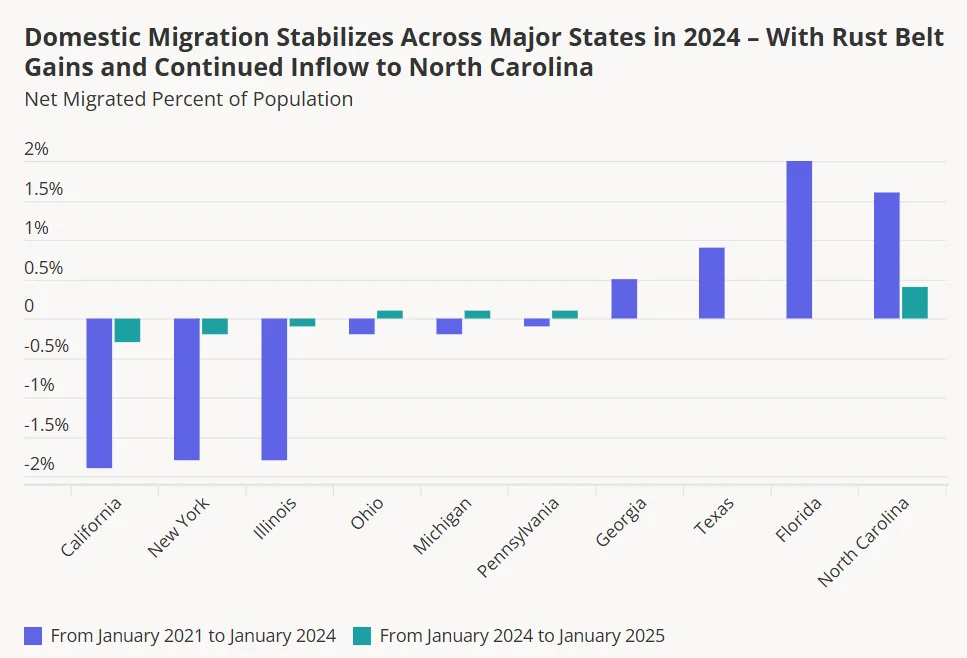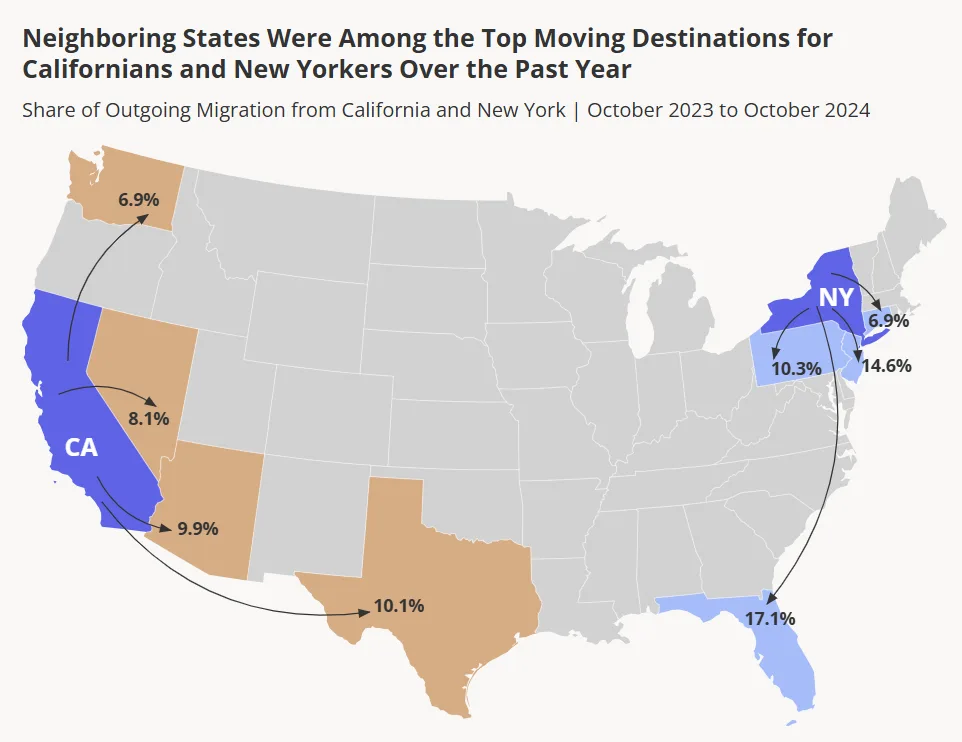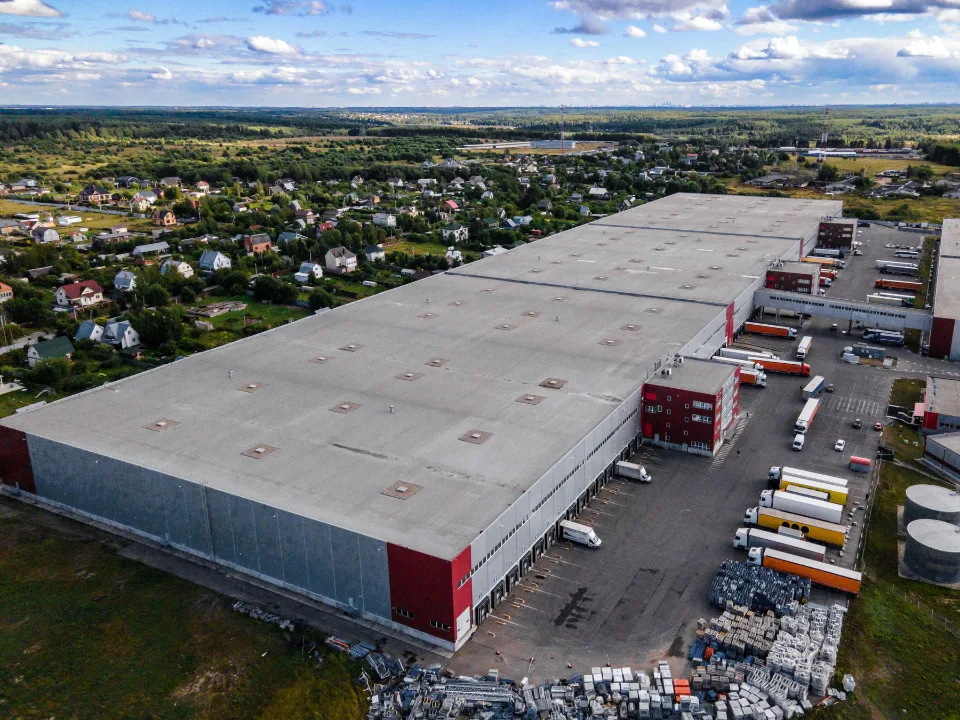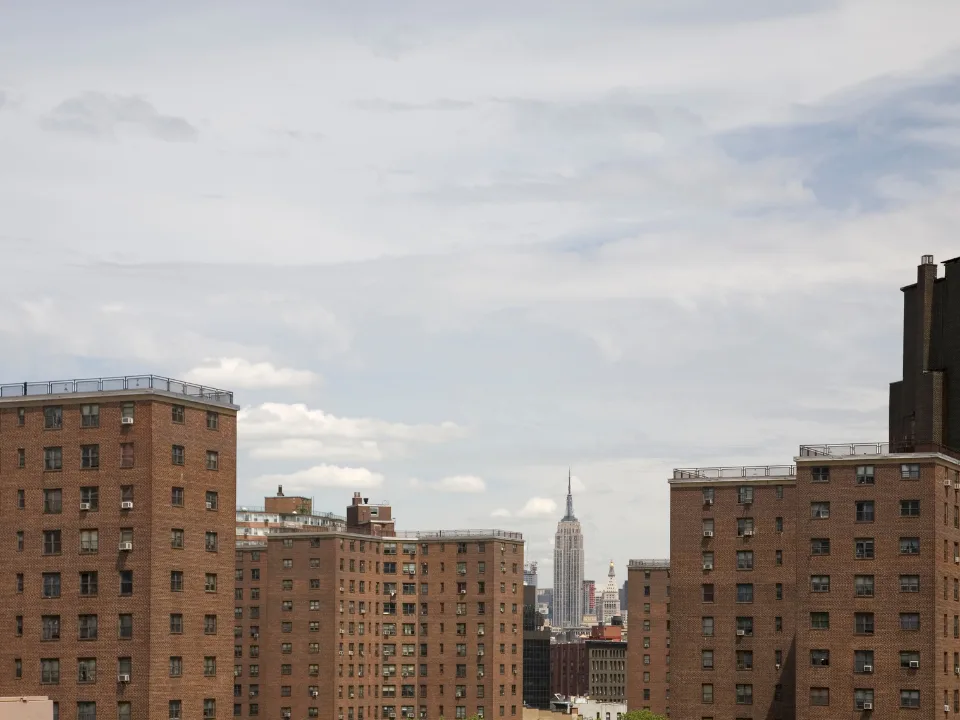- Idaho and South Carolina led domestic migration growth between 2021 and 2025, gaining over 3.0% of their populations through domestic relocations, while states like California, New York, and Illinois saw significant but slowing outflows.
- Interstate migration noticeably slowed in 2024, with inflows flattening in popular states like Texas and Florida, suggesting a broader stabilization of relocation patterns.
- Phoenix stood out among the nation’s largest metro areas, maintaining positive net domestic migration in 2024, as other major hubs saw migration rates slow or reverse.
Americans on the Move
According to Placer.ai, domestic migration patterns have shifted dramatically since 2021.
Remote work, affordable housing, and strong job markets drove millions to relocate. However, the pace of migration slowed noticeably in 2024, as high mortgage rates and return-to-office policies made moving less attractive. Still, some states and metro areas continue to draw steady streams of new residents.
Sunny Skies and High Peaks
Mountain and Sun Belt states remained migration winners over the past four years.
- South Carolina (+3.6%) and Idaho (+3.4%) recorded the highest net gains relative to their populations.
- Nevada, Montana, and Florida also remained popular destinations.
At the same time, states like California (-2.2%), New York (-2.1%), and Illinois (-1.9%) suffered the greatest losses, driven by high living costs and greater relocation flexibility.

The Big Ten: Shifting Momentum
Among the ten most populous states:
- Outflows from California, New York, and Illinois slowed significantly.
- Florida, Texas, and Georgia, which had been major gainers, saw their inflows flatten to zero.
- North Carolina stood out with a 0.4% population increase from domestic movers in 2024.
Interestingly, states like Ohio, Michigan, and Pennsylvania flipped from negative to slightly positive migration rates, hinting at a possible reversal in longer-term trends.

Phoenix Bucks the Trend
Looking at metro areas, Phoenix was the only one among the nation’s ten largest to maintain positive net migration (+0.2%) through 2024.
Other major cities like Los Angeles, New York, and Chicago saw their outflows flatten. Miami and Philadelphia, however, continued to lose residents, largely due to surging housing costs.
In Phoenix’s case, incoming residents mostly arrived from wealthier areas, drawn by its relative affordability and strong job market.

Looking Ahead
While migration has slowed nationwide, new hotspots are emerging. States like South Carolina, Idaho, and North Dakota, along with Phoenix, are leading the next chapter of American migration trends. As affordability challenges shift across regions, more demographic changes are likely in the coming years.














